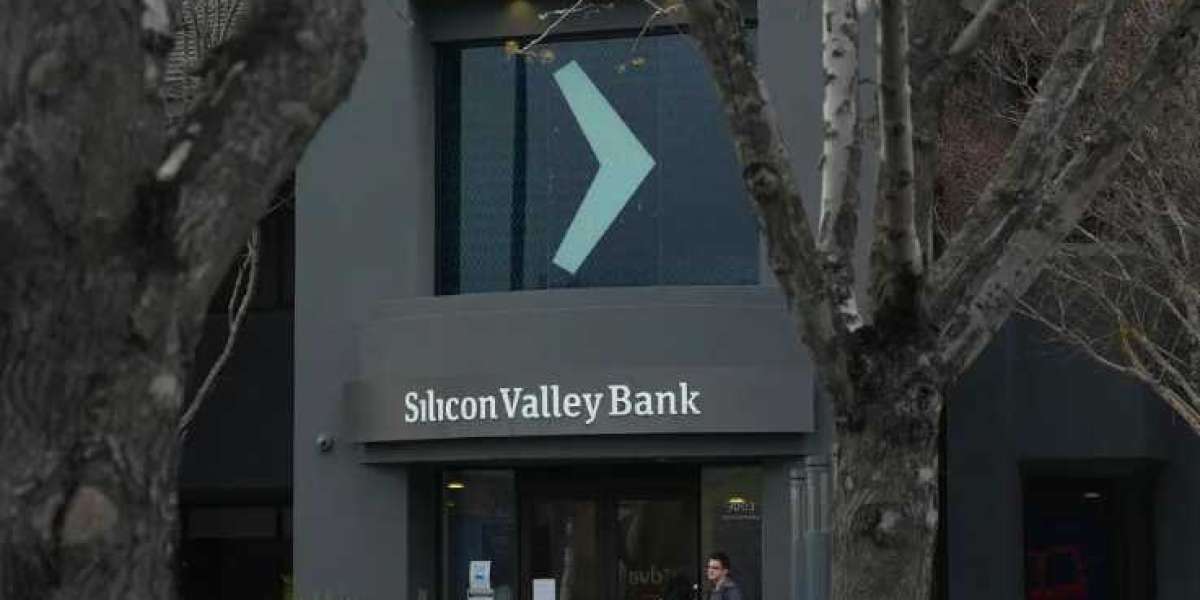
The Silicon Valley Bank headquarters in Santa Clara, Calif., on Friday. The bank had a gold-plated reputation inside the Silicon Valley start-up scene.Credit...Jim Wilson/The New York Times
What can the collapse of Silicon Valley Bank teach us about the tech industry?
On one level, not much. It’s true that S.V.B., as tech insiders called it, was a Silicon Valley institution, and that it counted many of the tech industry’s best-known start-ups and investment firms as its clients. It’s also true that the bank’s failure will have ripple effects throughout the tech sector in the short term, as companies that kept their money there struggle to get their deposits out and make payroll.
But what brought S.V.B. down wasn’t lending to risky start-ups, or gambling on sketchy crypto coins, or some other ill-considered tech scheme. It was an old-fashioned bank run, set off back in 2021 by a series of old-fashioned bad decisions.
That year, the stock market boomed, interest rates sat near zero, and money was flooded into the tech sector. Many start-ups parked their cash at Silicon Valley Bank, and the bank, in turn, took that money and invested it, including in a bunch of long-dated bonds. Those investments looked relatively safe at the time but became riskier last year as interest rates rose and the bonds lost some of their value. This year, as tech investment slowed and start-ups pulled cash out of the bank to pay their expenses, S.V.B. needed to sell some of its bonds at a loss and seek fresh capital to meet its obligations.
The bank may have been able to survive all of this, but when it explained to customers (badly) what had happened, some of those customers got worried that the bank was in trouble. Venture capital investors got spooked, and told their portfolio start-ups to withdraw any money they had sitting at S.V.B. Other customers saw that happening, and they panicked, too. Voilà, bank run.
Maybe that’s the only moral of the Silicon Valley Bank story — if you’re a bank, and many of your clients are tech start-ups whose funding ability is sensitive to rising interest rates, don’t invest their deposits in long-dated bonds that will lose value if interest rates rise. But I think we can draw a few other lessons from it.
First, while S.V.B. was a small bank by Wall Street standards (it was the 16th-largest bank in the country, with around $200 billion in assets as of January), it occupied a privileged place in the tech community. Started in 1983, the bank had a gold-plated reputation inside the Silicon Valley start-up scene. It was known for taking a risk on start-ups that no other banks would touch. This past week, as it collapsed, start-up founders told stories of how they’d gotten their first business loans or their first credit cards from Silicon Valley Bank. Some tech workers got their home mortgages and car loans there.
Relationships like those are valuable, and the most likely scenario here is that in the near future, a big Wall Street bank will acquire Silicon Valley Bank out of receivership. The big bank will assume S.V.B.’s assets and liabilities and make its depositors whole, and nobody will suffer catastrophic losses. (Except S.V.B.’s equity holders.)
A fast, orderly transfer of S.V.B.’s assets and liabilities to a new bank would be a best-case scenario. A worse scenario — one in which no buyer emerges, the bank’s customers have to wait weeks or months to access their money and the entire start-up ecosystem collapses because many cannot make payroll — could be catastrophic.
But even if the fallout from S.V.B.’s collapse is contained, lots of questions remain. Are there other banks with ties to the tech industry that are vulnerable to interest-rate risk, the way S.V.B. was? If a big bank acquires S.V.B., will it be as friendly to start-ups as S.V.B.? And after what just happened, will any start-up founder ever trust S.V.B. — or any bank — with their money again?
Second, it’s possible that Silicon Valley Bank’s extremely online clientele may have contributed to its downfall.
At most normal, midsize regional banks, what happened at S.V.B. probably wouldn’t have led to a panic. Banks sell assets all the time. They run into liquidity problems and raise short-term capital to solve them. Most of the time, customers never notice or care.
But S.V.B.’s depositors are not normal customers. They’re start-up founders and investors, the kinds of people who scrutinize banks’ securities filings, who pay close attention to risk and volatility and who (most importantly) talk to each other on the internet all day. Once a few people in tech raised questions about the firm’s solvency, Slack channels and Twitter feeds lit up with dire warnings from venture capitalists, and soon many people were panicking.
Would all of this have happened if S.V.B.’s clientele had been made up of restaurant owners and dog groomers, instead of tech start-up founders? Possibly. But it seems unlikely. In this case, S.V.B.’s demise seems to have been hastened by the clubby, herd-following nature of the industry it served.
The third lesson we can draw from S.V.B.’s collapse is that bank regulation works. As soon as it was clear on Friday that S.V.B. was going under, the Federal Deposit Insurance Corporation did what it always does when a bank fails — it swooped in, took over and started trying to make the bank’s customers whole. As a result, S.V.B. customers who had $250,000 or less deposited in insured accounts will be able to access those funds quickly. With any luck, a big bank will subsume the old S.V.B. seamlessly, make its larger depositors whole, and there will be no domino effect — no taxpayer bailouts, no mass start-up failures, just a simple and orderly bank failure.
In recent years, a certain set of tech leaders disparaged regulators and government officials as slow, corrupt and a drag on innovation. (Some of these same leaders begged for government bailouts on Friday.)
But because Silicon Valley Bank was mostly an ordinary bank — not some unregulated crypto casino or risky fintech start-up, where investors and deposits might have no recourse if their money disappeared — its failure will, in all likelihood, be more of an inconvenience than a long-term crisis.
If that happens, Silicon Valley will have regulation to thank for its survival.



